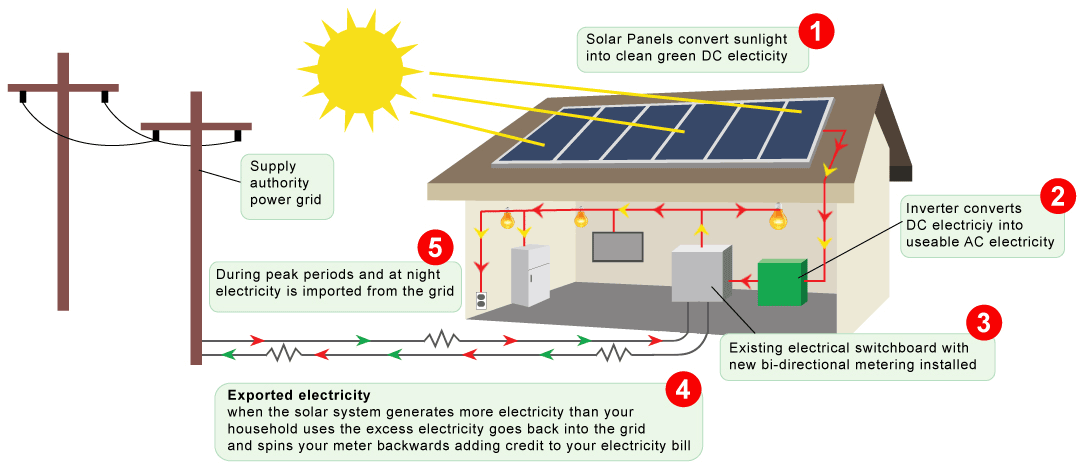
An on-grid solar power system is a type of solar energy setup that is linked directly to the main electricity grid. The power generated by the solar panels is transmitted to the utility grid, from where it is utilized to operate different electrical appliances. This system is also easy to install and requires minimal maintenance.
The arrangement of solar modules absorbs the sunlight on them and converts them into electricity. The current generated here is Direct Current (DC). The solar inverter then converts the DC to Alternating Current (AC), thus making it power the electrical items. This electricity is then routed to the grid where it is supplied for day to day use. An important feature is the net meter. It is a device that records the energy supplied to the grid and the energy consumed. At the end of each month, the outstanding is recorded and the consumer is provided with a bill.
1. Zero Electricity Bills – Though the solar power system is connected to the grid, the consumer has to pay only for the surplus electricity he consumes. The bill generated on a monthly basis determines whether the consumer has any payments to be made. However, at the same time if the consumer utilizes less electricity, the excess is fed back in the grid.
2. Easy maintenance – The on-grid solar power system has the least number of parts along with simple installation. The elimination of batteries makes the maintenance quite easy.
3. Passive income generation – With connection to the grid, the consumer can charge for the surplus electricity he has generated. It not only eliminates your electricity bills but also avail the cost benefits for the excess electricity generated. Solar power has several benefits which notably includes a reduction in the electricity cost and usage. However, there are other benefits that depend on the type of system you choose.